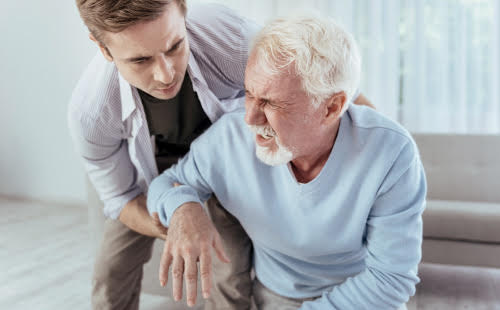An interruption or reduction in blood flow to the brain, which deprives brain cells of oxygen and nutrients, is the medical disease known as a stroke, as described by Healthline. In order to increase the likelihood of a successful recovery, it is crucial to recognise the signs of a stroke as soon as possible. Strokes can present in many ways, but the face, hands, and eyes are often the first places affected. In order to intervene quickly and reduce the potential for injury, it is essential to recognise these warning indicators.
Facial drooping or paralysis is a telltale sign of a stroke. The sudden drooping or numbness of one side of the face may be a sign of a stroke. One side of the mouth may droop more than the other when smiling, making it difficult for the person to smile symmetrically. If you suspect that a person has facial weakness, you can confirm it by asking them to lift their eyebrows or close their eyes.
According to healthline Stroke can cause problems with the hands and arms in addition to the face. An important warning indicator is sudden weakness or numbness in one arm or hand, especially on one side of the body. Stroke symptoms can also include a sudden inability to grasp things or a visible lack of coordination when attempting common chores like writing or buttoning a shirt. Seek quick medical assistance if you have weakness or numbness on one side of your body.
READ ALSO: 3 Causes Of Constipation & Some Local Foods That Can Help To Prevent It
Indicators of a stroke might also be picked up in the eyes. Vision loss or blurring in one or both eyes can happen suddenly and usually has other symptoms. Stroke victims often have trouble seeing clearly or even experience double vision. The sudden loss of sight in one eye might cause a total or partial blind spot. Vision abnormalities, especially when accompanied by other stroke symptoms, require urgent medical attention.
It’s important to keep in mind that not everyone experiencing a stroke will have the same symptoms. Stroke can also cause other symptoms such as a severe headache, dizziness, trouble communicating, and trouble walking or maintaining balance. Never disregard any of these signs because prompt treatment is critical for reducing brain damage and increasing chances of a positive result.
If you or someone you know exhibits any of the above signs, prompt action is required. It is imperative to seek immediate medical assistance by calling emergency services or going to the closest hospital. As a helpful mnemonic, the acronym FAST (Face, Arms, Speech, Time) can be used to recall the most important indicators of a stroke and the urgency with which they should be addressed.
In conclusion, knowing how to spot signs of a stroke in the face, hands, and eyes is crucial for the timely diagnosis and treatment of this potentially fatal condition. Learning to recognise these symptoms and getting medical help quickly can make a huge difference in a stroke patient’s chance of survival.








